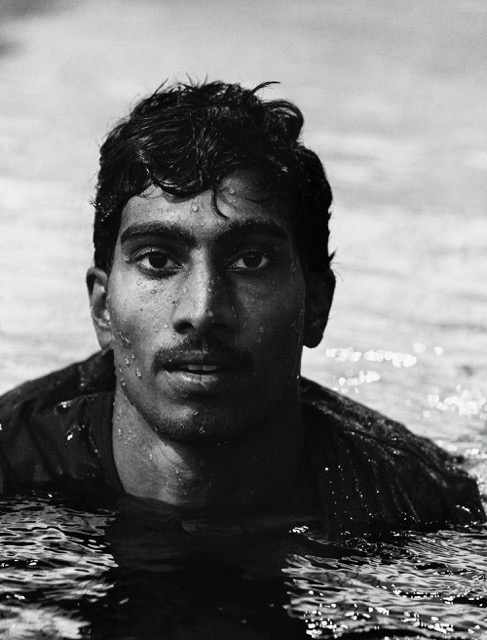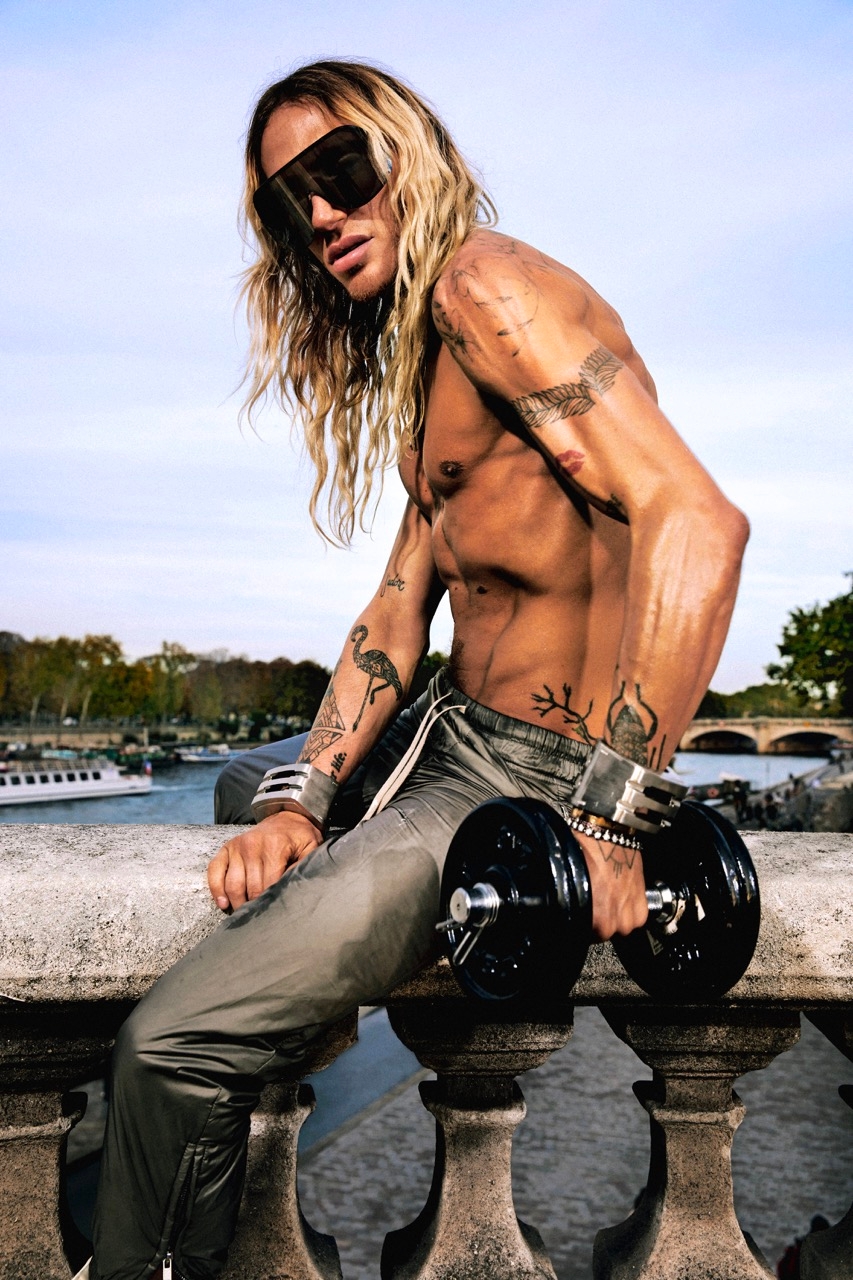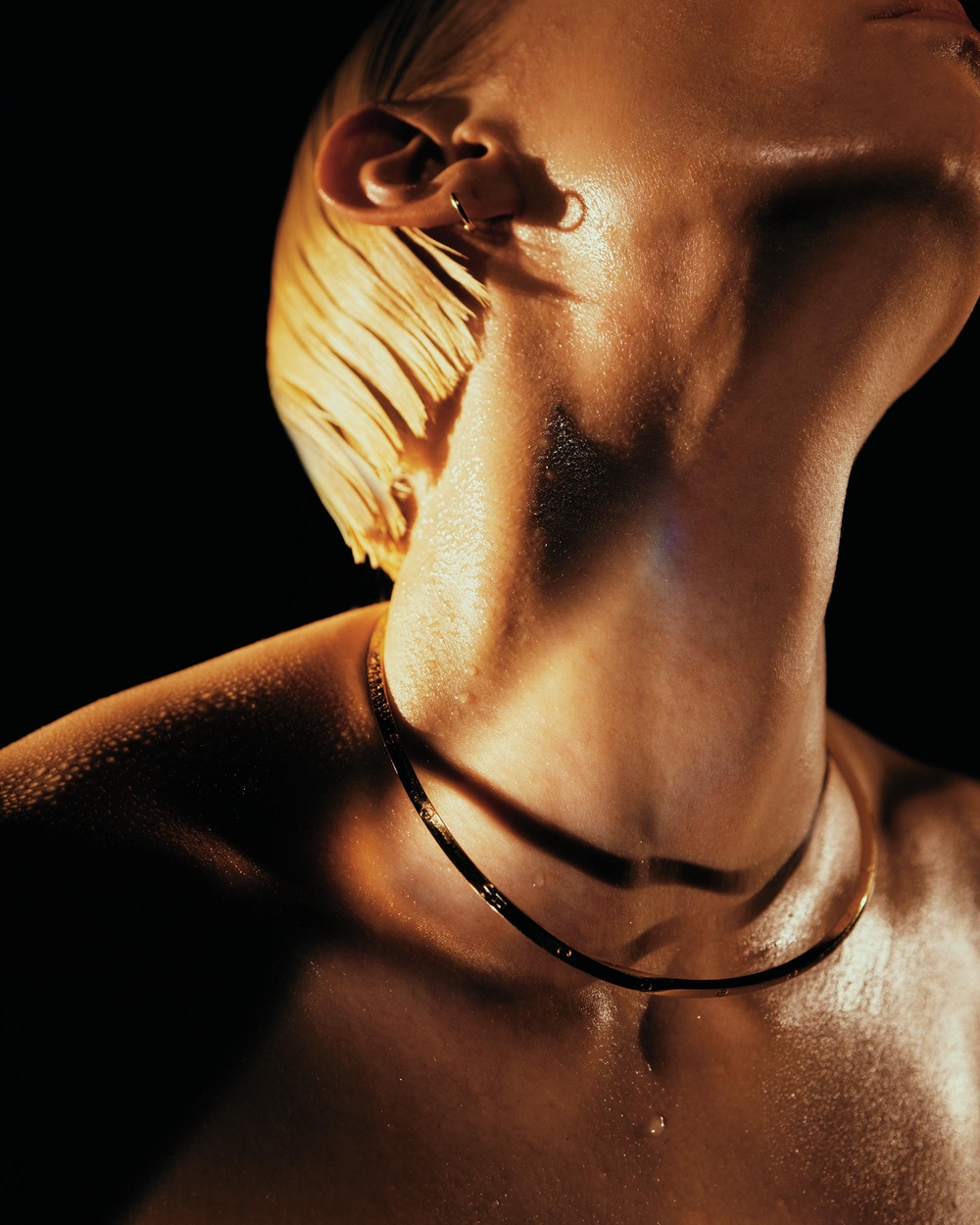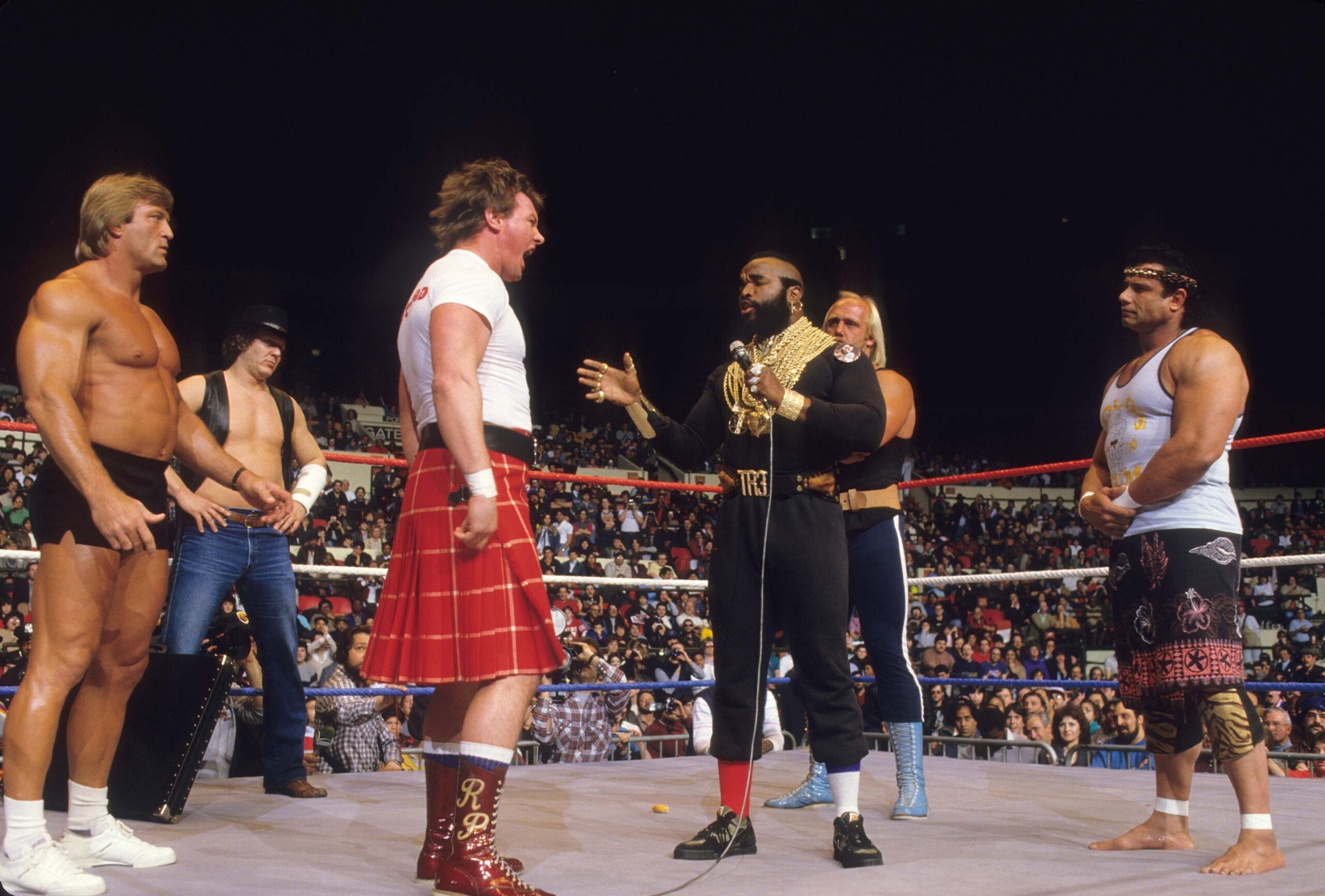

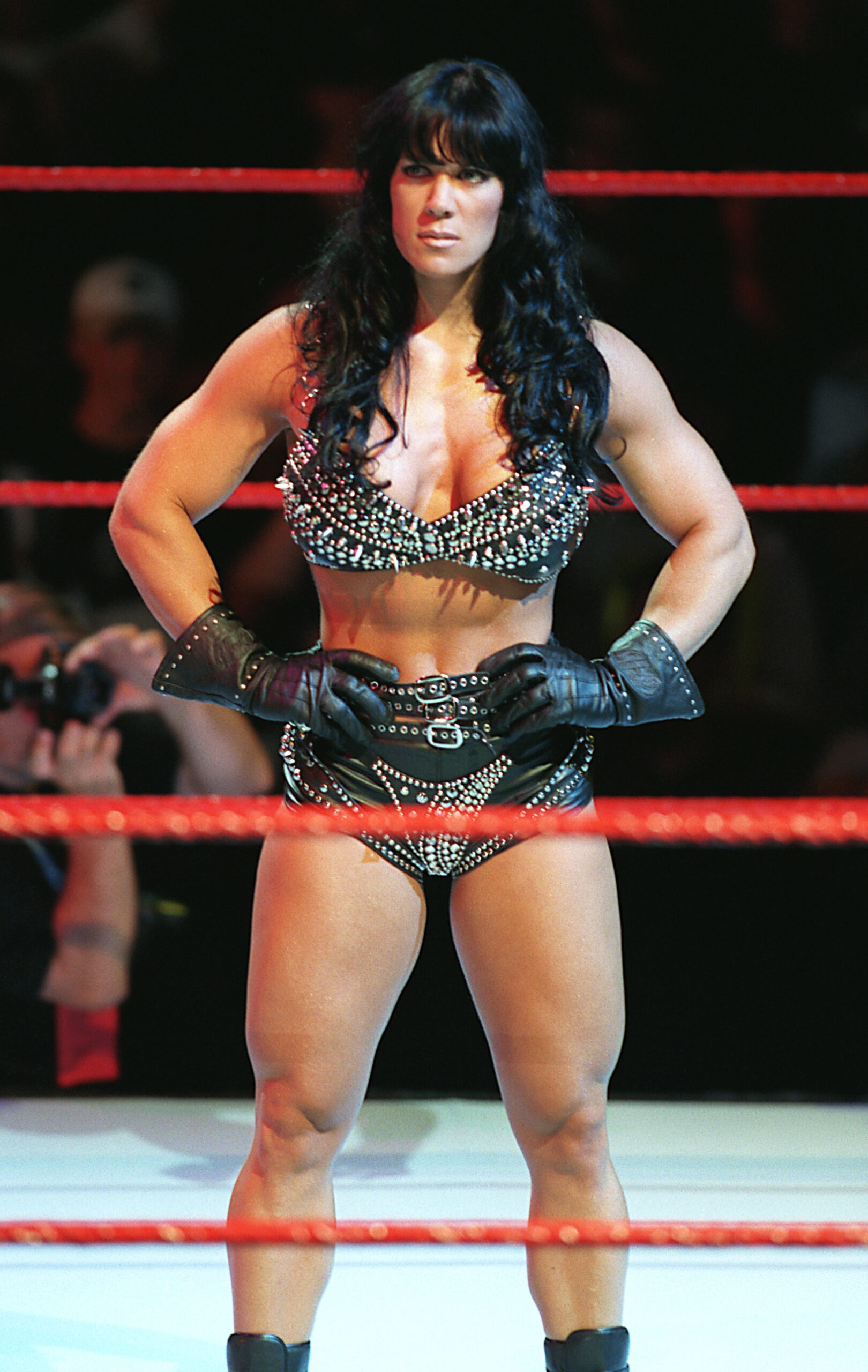
Summerslam wrestling with Gov. Ventura — √íNinth Wonder of the World√ì Chyna appears before the Target Center crowd Sunday night during SummerSlam √î99.(Photo By MARLIN LEVISON/Star Tribune via Getty Images)

This was my first experience of a new wave of sporting entertainment coming out of the US.
It turns out the WWF – now known as WWE, as I’ll refer to them throughout for ease – had actually been going for quite a few years, but it was a time when having a Sky satellite dish was a novelty and anything you got from the States was a luxury.
Founded in 1953 as the Capitol Wrestling Corporation, it was during the 1980s that WWE picked up the kind of popularity rarely seen in sport and more associated with American TV mega-shows like Dynasty and Dallas. Their headline act was WrestleMania, held at the end of March or the beginning of April, and to this day it has some of the biggest attendance numbers and viewing figures anywhere in the world, closely followed by its summertime spectacular, SummerSlam, in August.
So what was it that turned me into a superfan of wrestling?
The constant jibes of “it’s not even real” continue today. In terms of body contact, those sceptics are probably correct but you cannot deny the sheer athleticism of these sportspeople. Big, strong, powerful men and women throw themselves around the squared circle, with drop-kicks, body-slams, pile-drivers and flying elbows from the top rope. To be able to survive just the theatrics that come with these moves is a show of strength and stamina.
But forget the athletic ability. The key to WWE are the storylines and the characters they created.
Back in 1988, Hulk Hogan was already becoming a megastar, having slammed Andre the Giant at WrestleMania 3 in front of a sell-out crowd at the Pontiac Silverdome, and had dominated the heavyweight division for years. In the next couple of years he would find himself part of Hollywood with the WWE releasing No Holds Barred, a film in the style of Rocky (maybe without the script) which saw him battling a powerhouse by the name of Zeus The Human Wrecking Machine. In a genius bit of promotion, they actually continued the feud from the film into the WWE, setting up a battle with Hogan and Brutus ‘The Barber’ Beefcake against Zeus and the Macho Man.
This crossover from wrestling to the silver screen continued. Hogan had already appeared in Rocky 3 and went on to feature in Suburban Commando in 1991 and Mr Nanny in 1993. The most famous wrestler-turned-movie star, though, is of course The Rock, better known to millions as Dwayne Johnson, now one of the highest paid actors in the industry.
But it wasn’t just wrestlers wanting to be film stars. Film stars, musicians and other sports people wanted in on the in-ring action. Mr T, fresh from his performance in Rocky 3, took on Rowdy Roddy Piper in a boxing match at WrestleMania 2. Shaquille O’Neal featured in a Battle Royal, and more recently Bad Bunny found himself part of WrestleMania 37.

The early 90s was also the time when game consoles were the new must-have, so obviously the WWE had the game, magazine and merch ready to go. I subscribed to the magazine and would pick it up every two weeks from Martin’s newsagent during my lunch hour from my Saturday job at the Frutique.
There was only one part of the entertainment world that the WWE had not penetrated – the pop music charts, and that was imminent. The WWF Superstars’ effort ‘Slam Jam’ reached number 4 in the UK in 1992 – obviously I had it on tape. The following year, ‘WrestleMania: The Album’ was released; Mike Stock and Pete Waterman were brought in to oversee the project as producers, alongside an executive producer by the name of Simon Cowell. I’m not going to justify the musical efforts; they were not good.
Some of the most entertaining moments in the WWE didn’t come from the wrestlers themselves, but the managers – the mouthpieces who did all the talking, built the feuds, and whipped the crowds up into even more of a frenzy. Jimmy Hart, nicknamed ‘The Mouth of the South’ and ex-band member of the Gentrys, was the manager of the Hart Foundation tag-team, using his trademark megaphone to sneak up on his team’s opponents and hit them over the head in an effort to lead his team to victory.
Miss Elizabeth, the long-time manager of Macho Man, was a less devious character – more there as a support and distraction with her striking look and spectacular gowns. Sensational Sherri, an arch enemy of Elizabeth who would go on to manage the Macho Man, was a more intense troublemaker, causing numerous defeats for her wrestlers’ opponents by doing anything in her power to get the win.
Wrestling was the only thing to talk about, and naturally I became totally obsessed. I explored the entire WWE back catalogue, buying previous WrestleManias and SummerSlams on videotape, delving deeper into the background of all the wrestlers.
There were also other wrestling corporations starting to rival the WWE. Most notably, there was WCW with its own stars Sting and Ric Flair, who were also becoming household names. They would both feature in WWE in years to come; WCW were bought out, unable to compete with their rival’s overriding popularity and success.
Then in 1992, SummerSlam came to Wembley, London. My dad, who was also really into the whole wrestling scene, took me. He had previously taken me to a local wrestling event in my hometown. It was awful; just a bunch of men – some that I probably knew – with masks on, jumping around and making noises. I just sat there with the same expression as Cersei Lannister in Game of Thrones, totally confused and unimpressed.
SummerSlam was different. Our tickets were quite far back but I got a foam finger and obviously told everyone I was ringside. It was incredible: the drama, the music, the lights, it was everything I expected and more. I actually felt really nervous coming up to the final fight, which was The British Bulldog Davey Boy Smith v Bret ‘the Hitman’ Hart. The Hitman was my favourite at the time, and was defeated that night, losing his Intercontinental title belt to his real-life brother-in-law. I feel like I should have been supporting the Bulldog, but I wasn’t, and during the journey home I went on and on to my dad about how the whole thing was a fix and not real (the irony).
My journey through WWE came to a dramatic halt in the mid-1990s. As I got older, other interests started to take hold, and when I did eventually start checking in on what was happening in the wrestling world, there was a whole new development called the Attitude Era. This was a time when the WWE and WCW started to cross over and fight each other. It also introduced new superstars such as Stone Cold Steve Austin and The Rock. One of the most intriguing wrestlers to join was Chyna, a female wrestler with a strong bodybuilder physique and the ability to stand up to the male wrestlers. In fact she would go toe to toe with them and would go on to win the Intercontinental title twice (still the only woman to do so) and the WWF championship once. She was truly a groundbreaking addition. With a few exceptions, WWE’s female wrestlers were portrayed as more of a glamorous sideshow. Chyna changed the game and also provided a platform for women to wrestle with the same respect given to them as the men. Today’s female superstars like Becky Lynch, Charlotte Flair and the ex-MMA fighter Ronda Rousey top the bill and headline pay-per-view events, just like their male counterparts.
WWE, for all the criticisms levelled at it, changed the way we see sport as entertainment. The elaborate ring walks are something you now see in other sports such as boxing and UFC – which both now have a frequent crossover of athletes into the WWE. Pay-per-view events, something the WWE has been using for decades, are now the norm for numerous sports. And most importantly the back stories and build-up are mimicked across sports, whether combat sport or not: big anticipation means big money.
It might not have been ‘real’, the music was terrible, and some of the storylines have dated horribly, but I doubt there’ll ever be another phenomenon quite like it. And let’s not forget the eclectic team of superstars acquired to promote the first WrestleMania in 1985: Cyndi Lauper, Muhammad Ali and Liberace. Now that’s entertainment.

Summerslam wrestling with Gov. Ventura — √íNinth Wonder of the World√ì Chyna appears before the Target Center crowd Sunday night during SummerSlam √î99.(Photo By MARLIN LEVISON/Star Tribune via Getty Images)
Wrestling was the only thing to talk about, and naturally I became totally obsessed. I explored the entire WWE back catalogue, buying previous WrestleManias and SummerSlams on videotape, delving deeper into the background of all the wrestlers.
There were also other wrestling corporations starting to rival the WWE. Most notably, there was WCW with its own stars Sting and Ric Flair, who were also becoming household names. They would both feature in WWE in years to come; WCW were bought out, unable to compete with their rival’s overriding popularity and success.
Then in 1992, SummerSlam came to Wembley, London. My dad, who was also really into the whole wrestling scene, took me. He had previously taken me to a local wrestling event in my hometown. It was awful; just a bunch of men – some that I probably knew – with masks on, jumping around and making noises. I just sat there with the same expression as Cersei Lannister in Game of Thrones, totally confused and unimpressed.
SummerSlam was different. Our tickets were quite far back but I got a foam finger and obviously told everyone I was ringside. It was incredible: the drama, the music, the lights, it was everything I expected and more. I actually felt really nervous coming up to the final fight, which was The British Bulldog Davey Boy Smith v Bret ‘the Hitman’ Hart. The Hitman was my favourite at the time, and was defeated that night, losing his Intercontinental title belt to his real-life brother-in-law. I feel like I should have been supporting the Bulldog, but I wasn’t, and during the journey home I went on and on to my dad about how the whole thing was a fix and not real (the irony).
My journey through WWE came to a dramatic halt in the mid-1990s. As I got older, other interests started to take hold, and when I did eventually start checking in on what was happening in the wrestling world, there was a whole new development called the Attitude Era. This was a time when the WWE and WCW started to cross over and fight each other. It also introduced new superstars such as Stone Cold Steve Austin and The Rock. One of the most intriguing wrestlers to join was Chyna, a female wrestler with a strong bodybuilder physique and the ability to stand up to the male wrestlers. In fact she would go toe to toe with them and would go on to win the Intercontinental title twice (still the only woman to do so) and the WWF championship once. She was truly a groundbreaking addition. With a few exceptions, WWE’s female wrestlers were portrayed as more of a glamorous sideshow. Chyna changed the game and also provided a platform for women to wrestle with the same respect given to them as the men. Today’s female superstars like Becky Lynch, Charlotte Flair and the ex-MMA fighter Ronda Rousey top the bill and headline pay-per-view events, just like their male counterparts.
WWE, for all the criticisms levelled at it, changed the way we see sport as entertainment. The elaborate ring walks are something you now see in other sports such as boxing and UFC – which both now have a frequent crossover of athletes into the WWE. Pay-per-view events, something the WWE has been using for decades, are now the norm for numerous sports. And most importantly the back stories and build-up are mimicked across sports, whether combat sport or not: big anticipation means big money.
It might not have been ‘real’, the music was terrible, and some of the storylines have dated horribly, but I doubt there’ll ever be another phenomenon quite like it. And let’s not forget the eclectic team of superstars acquired to promote the first WrestleMania in 1985: Cyndi Lauper, Muhammad Ali and Liberace. Now that’s entertainment.


